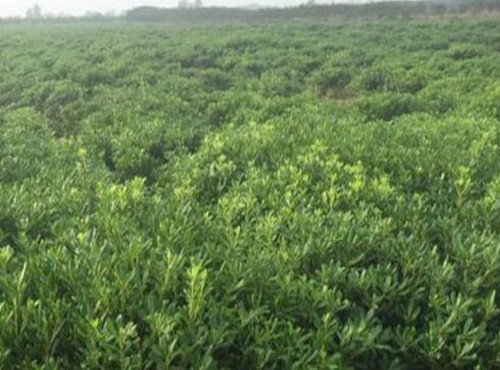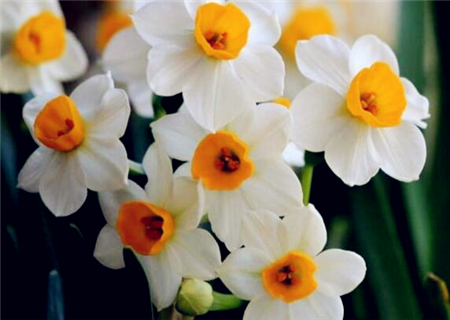When will sweet-scented osmanthus blossom? How to grow well? How much is the price of a sweet-scented osmanthus tree of 10 centimeters?
Osmanthus fragrans is one of the top ten famous flowers in Chinese tradition. It is an excellent ornamental and practical tree species with high ornamental value, which integrates greening, beautification and incense. So when will sweet-scented osmanthus blossom? How to grow well? How much is the price of a sweet-scented osmanthus tree of 10 centimeters?

When will sweet-scented osmanthus blossom
Speaking of sweet-scented osmanthus blooming for a short time, in fact, this depends on what variety of sweet-scented osmanthus, because different varieties of sweet-scented osmanthus, their flowering time is different, and the color of flowering is also different.
Cinnamon blossoms from September to October, and the color is golden yellow. Cinnamon also blossoms in September-October, but the flowers are white or yellowish white. Cinnamon blossoms in October and the color is orange-red or orange-yellow. Four seasons cinnamon, usually four seasons when there will be a small number of flowers, the color is white.
How to grow sweet-scented osmanthus?
1, timely watering: sweet-scented osmanthus pot soil should grasp the principle of whether it is dry or irrigated, but spray fresh water to the leaves once a day. After the Qingming Festival, the sweet-scented osmanthus should be watered once in the open air, which should be watered in the morning and evening in summer and around noon in winter, so that the water temperature is close to the soil temperature, so as not to cause sudden cold and heat, and pay attention not to stagnant water.
2. Rational fertilization: sweet-scented osmanthus is mainly ornamental, and sufficient fertilizer should be provided. Nitrogen fertilizer can be applied twice during shoot sprouting, and phosphorus fertilizer is mainly applied before flower bud differentiation and flowering. The basin soil should be a little drier before fertilization, and it is appropriate to loosen the soil first so that the fertilizer can be absorbed, and water should be watered the next day.
3. Pour the basin and change the soil: the sweet-scented osmanthus should change the soil once every 2 ~ 3 years, cut off part of the old and withered roots, cover the bottom of the basin with a layer of river sand or vermiculite to facilitate ventilation and drainage, and place rotten cake fertilizer as the base fertilizer, the fill must be compacted. The ratio of soil to soil is not very strict, and it can usually be made of garden soil, barnyard manure and river sand.
4. Pruning and shaping: Osmanthus fragrans generally adopt the method of combination of climbing and pruning, which should be carried out after autumn. Plants with poor tree shape can cut off the whole top branch at 2 / 3 or 3 / 4, and plants with too dense branches should be thinned. After flowering, they should also cut off overgrown branches, withered branches, disease and insect branches, dense and thin branches.
5. Overwintering management: sweet-scented osmanthus overwintering room temperature should be kept at 0: 5 ℃ and relative humidity at 50: 80%. Winter cold indoor light should be good, especially before the early spring buds began to sprout, but also required sufficient sunshine, the following year Grain Rain arranged potted sweet-scented osmanthus to come out of the room. After leaving the room, first concentrate on the outdoor leeward to the sun, so that it gradually adapt to the external environment.
6. disease control: the common diseases of sweet-scented osmanthus are leaf spot, coal pollution, algae spot, root rot, iron deficiency and so on. Leaf spot, coal pollution and algal spot can be sprayed with 0.5 Bordeaux solution or 5% carbendazim 500-1000 times. Root rot should pay attention to keep the soil loose and permeable, do not accumulate water.
7. pest control: the common pests of sweet-scented osmanthus are leaf wasp, whitefly, mite, white scale, yellow moth and so on. Leaf wasps, whitefly and mites can be sprayed with 40% dimethoate 1500-3000 times liquid, and Changbai scale can be sprayed with 40% omethoate 1000 times solution or 40% fenitrothion 500 times solution in the first and second generation nymphs except manual brushing.
How much is the price of a sweet-scented osmanthus tree of 10 centimeters?
According to the latest online price sweet-scented osmanthus tree base treats osmanthus, cinnamon and August osmanthus trees with a diameter of more than 10 cm for 200 yuan each.
What are the varieties of sweet-scented osmanthus?
1. Four seasons cassia varieties: four seasons cassia tufted shrubby, tree-shaped low, short and dense branches, round crown. The new leaves are deep red and the old mature leaves are green or yellowish green. The leaf is oval in shape, and the intersection angle between the main vein and the lateral vein of the leaf is very large, close to the vertical state. The flowers bloom in batches from September to March every year, and the fragrance of the flowers is not as strong as that of cinnamon, cinnamon and cinnamon. Common varieties are big leaf four seasons cinnamon, leaflet four seasons cinnamon, four seasons flowering laurel, Japanese incense, big leaf Buddha top bead, tooth leaf four seasons cinnamon and other varieties.
2. Cinnamon population: Cinnamomum dioecious, the crown is round, the bark is light gray, smooth and the lenticels are sparse. Leaves leathery, long elliptic or elliptic, flat, margin retrorse, entire, apex occasionally sparsely toothed, base broadly cuneate, apex obtuse or mucronate, lateral veins 8-10 pairs, reticulate veins obvious on both sides, petiole 8-10 mm long. The flower color is orange-red, the Corolla is slightly buckled, the fragrance is light, and the flowering period is from late September to early October. There are big flower cinnamon, tooth cinnamon, cinnamon cinnamon, broad leaf red and other varieties.
3. Jin Guipin population: the crown of Jin Gui is spherical, the tree is strong, and the branches are tall and straight, very close. The bark is gray, the lenticels are round or oval, and the spring shoots are stout. The leaf color is dark green, the leaf blade is oval, the leaf surface is uneven, the leaf edge is microwave curved. Flowers yellow, fragrant, not sturdy, autumn flowering, lemon yellow to golden yellow flowers. The varieties are Dahua Jingui, Daye Huang, Huangchuan Jingui, late Jingui, Yuanye Jingui, Xianning Evening Gui, Ball Gui, Yuanjian Jingui, Liu Ye Su Gui, Jin Shigui, Boye Jingui and so on.
4. Silver cinnamon population: the crown of silver cinnamon is spherical, the big branches are developed, the branches and leaves are dense, the bark is light gray, and the lenticels are many and large, similar to snowflakes. The leaf is green or dark green, long oval or oval, the leaf is broad and thick, and the leaf surface is more spreading. Flowering in the first and middle of September, the color of milky yellow to lemon yellow, rich aroma, not strong after flowering, autumn flowering. Varieties are broad-leaf seed silver cinnamon, willow leaf silver cinnamon, hard leaf silver cinnamon, seed silver cinnamon, Jiulong cinnamon, early silver cinnamon, evening silver cinnamon, Baijie, pure white silver cinnamon, Qingshan silver cinnamon, etc.
twelve
Time: 2019-03-21 Click:
- Prev

How much is the price of Haitong seed per jin? How many years does it blossom? Can its fruit be eaten?
Haitong is mainly distributed in southern Jiangsu, Zhejiang, Fujian, Taiwan, Guangdong and other places; Korea, Japan. Gardens in the Yangtze River valley and its south are commonly cultivated and ornamental. So, how much is the price of Haitong seed per jin? How many years does it blossom? Can its fruit be eaten? It is understood that the price of Haitong seed is more than ten yuan per jin.
- Next

When do daffodils bloom? How to prolong the florescence? How to grow well?
Narcissus, also known as Chinese daffodils, is a variety of multi-flowered daffodils. It has been cultivated in China for more than a thousand years. It is a traditional ornamental flower and is one of the top ten famous flowers in China. So when will the daffodils bloom? How to prolong the florescence? How to grow up well?
Related
- Fuxing push coffee new agricultural production and marketing class: lack of small-scale processing plants
- Jujube rice field leisure farm deep ploughing Yilan for five years to create a space for organic food and play
- Nongyu Farm-A trial of organic papaya for brave women with advanced technology
- Four points for attention in the prevention and control of diseases and insect pests of edible fungi
- How to add nutrient solution to Edible Fungi
- Is there any good way to control edible fungus mites?
- Open Inoculation Technology of Edible Fungi
- Is there any clever way to use fertilizer for edible fungus in winter?
- What agents are used to kill the pathogens of edible fungi in the mushroom shed?
- Rapid drying of Edible Fungi

